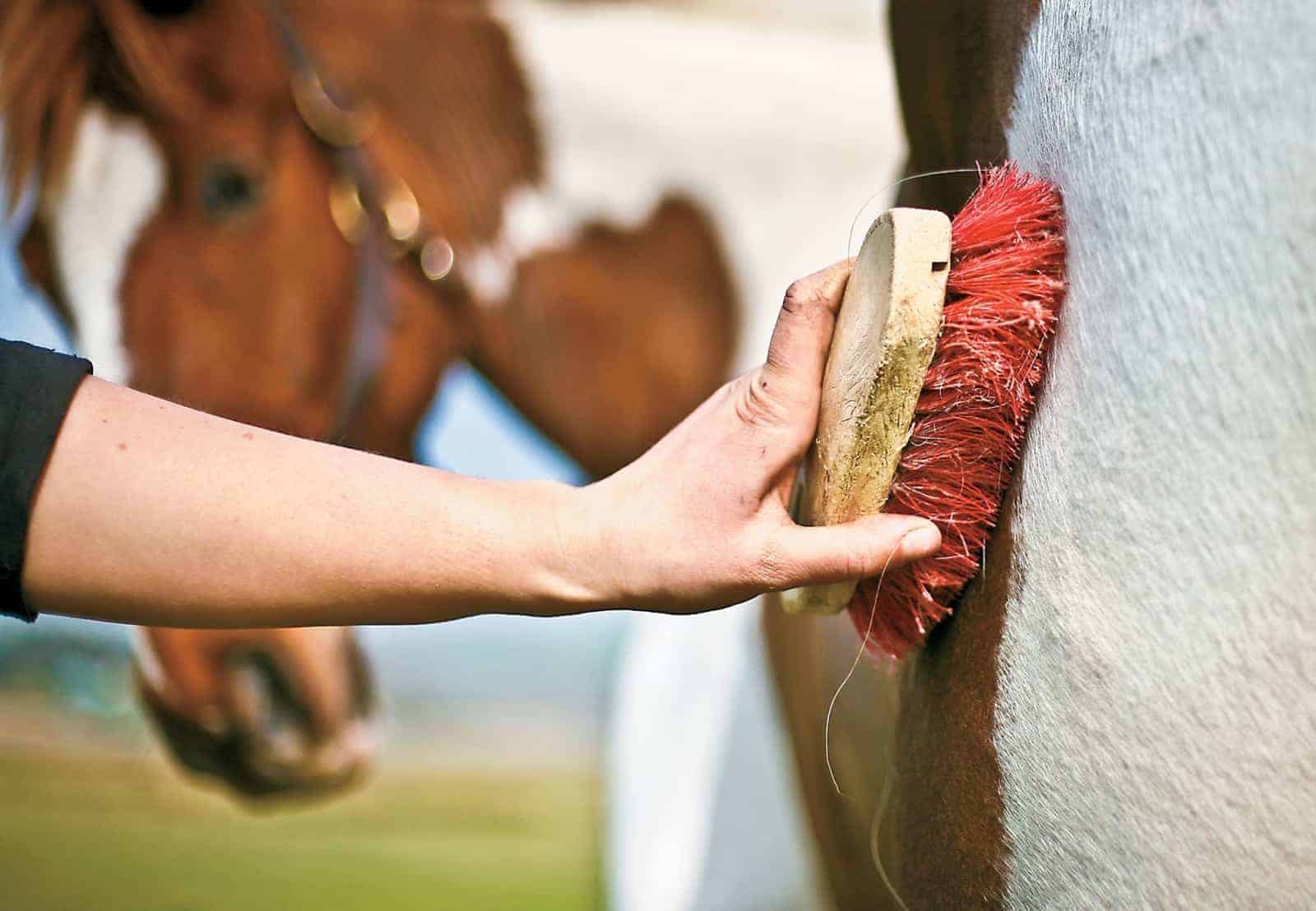Rain Rot in Horses: Diagnosis, Treatment, and Prevention
- Topics: Article, Hair Loss, Other Skin Problems

While spending as much time as possible at pasture can be good mentally for your horse, if you live in an area with wet or very humid conditions, your horse might be at risk of contracting a bacterial skin disease commonly known as “rain rot.”
Ann Swinker, PhD, who recently retired from her post as an extension horse specialist at Penn State University, explains what the infection looks like, how to treat infected horses, and ways to prevent horses from getting or spreading the infection.
Cause
“Rain rot or rain scald (also known as dermatophilosis) is caused by bacterial infection, and it often is mistaken for a fungal disease,” Swinker says. “The bacteria live in the outer layer of skin and cause from pinpoint to large, crusty scabs.”
Dermatophilus congolensis, the bacterium found to cause this infection, lives in dormant within the skin until the skin is compromised in some way, which can happen when there’s prolonged wetness, high humidity, high temperature, or attacks by biting insects, according to The Merck Veterinary Manual. Warm temperatures and high humidity can also cause an increase in the number of biting insects (particularly flies and ticks) present that can spread the infection from horse to horse.
Rain rot in horses occurs when the infective zoospores (created by D. congolensis bacteria to propagate themselves) reach a compromised skin site. Swinker says, “The zoospores germinate and produce hyphae (threadlike tentacles), which penetrate into the living epidermis and spread in all directions, resulting in an acute inflammatory skin condition.”
Diagnosing Rain Rot
It’s easy to diagnose rain rot, generally on visual confirmation of the skin lesions alone, but a more definite diagnosis can be made by examining a skin scraping for Gram-positive bacteria under a microscope or by culturing the bacteria.
Horses with long winter coats will develop paintbrush lesions (raised, matted tufts of hair) along their dorsal surfaces, which include the neck, withers, back, and croup, as well as on the lower limbs. Light-skinned areas are usually more severely affected. As the lesions get larger and join together, they will progress to a crust or scab formation that when removed will expose yellow-green pus between the necrotic and living skin layers.
Swinker says, “If rubbed, the ‘bumps’ might rub off in the form of scabs with a small, hairless spot of skin showing.”
Treatment
Most acute cases of rain rot in horses can heal on their own; however, Swinker recommends treating even minor cases because the lesions can spread and worsen. The lesions also interfere with use (especially if they are located along the horse’s back or withers) and they can be painful for the horse.
She says, “In early or less severe cases, simply removing the scabs (by bathing the horse) with antimicrobial shampoos and currying will take care of the problem.” However, more severe cases in which the infection has affected deeper skin layers might require your veterinarian to give antibiotic injections (such as procaine penicillin and streptomycin). Unlike most skin conditions, rain rot is not itchy, but it can be painful to the touch. Be cautious when bathing or removing the scabs.
Prevention
Practicing good hygiene, such as daily grooming with clean brushes, along with reducing environmental risk factors (constant wet and/or humid environments and biting insects), are the best ways to prevent your horse from getting rain rot. Because this infection can spread to other horses, it’s important to isolate the infected horse to reduce the risk of spreading the infection to pasturemates. Also, be sure to use a separate set of grooming tools and tack (if the infection is light enough to continue working the horse without causing harm), and disinfect these items between each use.
Written by:
Chad Mendell
Related Articles
Stay on top of the most recent Horse Health news with












